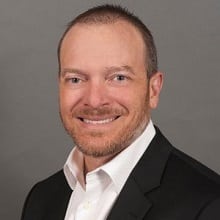
Chris Townsend has been vice president of federal at Symantec for two years, after the acquisition of BlueCoat. He has been in federal IT since 2003.
Why Watch: When Townsend joined Symantec, he began an approach that flipped the company’s sales focus into a customer service approach. He asked his team to meet with existing clients to educate them on better using and consolidating their current suite of tools, and to work toward building an integrated security platform to more effectively address their mission needs.
“We believe that’s how we’re maximizing our value and bringing real innovation to our federal customers,” Townsend said. “As a result of this approach over the last 18 to 24 months, we grew the Symantec federal business over 30 percent land are on pace to double the business by 2020.”
Townsend sees three fast-growing segments of cyber. The first and most prominent continues to be the cloud.
“The move to cloud is forcing organizations to rethink security in a big way, and that’s really driving the shift in a lot of our customers in terms of how they’re investing, how they’re changing their security policies, and their view on security,” he said.
The second is threat analytics and leveraging data to identify and block threats while leveraging artificial intelligence and machine learning. Symantec maintains one of the largest threat databases in the world and is on “the leading edge in terms of how we incorporate that information into our platform,” Townsend said.
The third area is web isolation.
“If we can move your web browsing out to the edge of the network, essentially do all your web browsing in the cloud and not bring that malicious content back across the network, it can eliminate a significant threat vector and really help us to start addressing the phishing problem, which has been an issue for a long time,” Townsend said.
All three areas come into play in the recent trend of moving away from a reactive tools-based approach to security and shifting toward an operational approach.
“Ultimately, the goal is to really drive automation across the security environment and improve operational visibility, while reducing complexity and operating costs,” he said.

